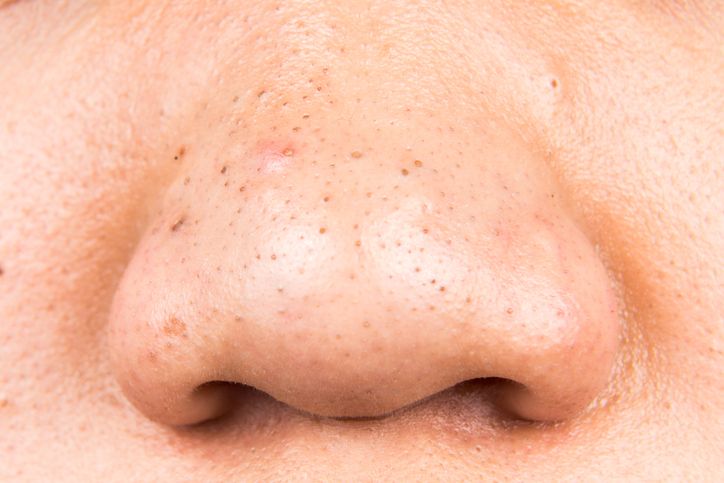- Home
- Trend
- Weight Loss Strategies
- Acne Tips
- Hair Health Information
- Blemish Removal Tips
- Acne Scar Removal Tips
- Muscle Building Techniques
- Intimate Care Tips
- Postpartum Intimate Care
- Eye Bags Wiki
- Tips for Face Slimming
- Secret of Permanent Hair Removal
- Breast Enlargement Tips
- Cure to Snoring
- Marionette Lines
- Skin-Tightening Secrets
Many people, especially teenagers, struggle with comedones. Blackheads and comedones can appear in large numbers on the face, often making the skin rough and pores larger, which can severely impact self-confidence and first impressions. To tackle blackheads and comedones, many try to squeeze them out themselves. While it may temporarily smooth the skin, these issues will inevitably return, sometimes even worsening. To effectively and permanently solve the problem, it is important to first understand the causes of comedones, which will lead to the correct solutions. This article provides a comprehensive exploration of comedones to help you understand them better and find effective ways to deal with them!
How Do Comedones Form? A Detailed Explanation of the 6 Major Causes!

As the saying goes, "Know yourself and know your enemy, and you will not fear the result of a hundred battles." To successfully eliminate blackheads and comedones, we must first understand the causes behind their formation. This way, we can treat the root cause and prevent recurrence.
i. Excessive Sebum Production
Excessive sebum production is the leading cause of comedones. Our skin has many small sebaceous glands that secrete oils to protect our skin from damage or dehydration. However, when these glands become imbalanced and secrete too much oil, it can lead to a buildup in the pores, blocking them. This blockage eventually leads to the formation of blackheads and comedones. People with oily skin should consider using oil-control skincare products to address this issue.
ii. Excessive Skin Dryness
While excessive oil production is the main cause of comedones, even dry skin can lead to the same problem. When skin is overly dry and dehydrated, it stimulates the sebaceous glands to produce more oil. The body does this to protect and moisturize the skin. If the skin remains dry and lacks hydration, the sebaceous glands will continuously overproduce oil, resulting in the skin becoming oily on the inside but dry on the outside. Additionally, over-cleansing the skin can strip away natural oils, leading to dryness. Therefore, it is important to hydrate and moisturize the skin while also controlling oil production to maintain a balanced skin condition.
iii. Inadequate Facial Cleansing
Insufficient facial cleansing is another major cause of comedones. Many people mistakenly believe that their skin isn't dirty and only wash their face with water, skipping facial cleansers. However, our skin pores often contain dust, dirt, oil, and bacteria that are invisible to the naked eye. If we don't properly cleanse our face, these impurities can accumulate in the pores and lead to blockages. This in turn causes blackheads and comedones. It is recommended to wash your face twice a day, morning and night, using a facial cleanser.
iv. Hormonal Imbalance
The formation of comedones is also related to the level of male hormones in the body. While women have lower levels of male hormones, these hormones can still stimulate the sebaceous glands to produce more oil, greatly increasing the chances of clogged pores and comedone formation. If a woman experiences hormonal imbalance and her male hormone levels rise, it can significantly increase the likelihood of comedones and blackheads.
v. Lack of Regular Exfoliation
Regular exfoliation is an important part of skincare. The skin's surface is covered by a layer of dead skin cells that protect the underlying tissue. Normally, this layer of dead skin cells is naturally shed in about 28 days, and new cells replace them. However, various factors can slow down metabolism and lead to a buildup of old dead skin cells, which may not naturally shed. This can lead to thickened skin, which clogs the pores and leads to comedones. Exfoliating regularly helps prevent this buildup.
vi. Incomplete Makeup Removal
Many women wear makeup, but not properly removing it can leave traces of cosmetics and their chemical components in the pores, which can clog them and cause comedones. If makeup isn't thoroughly removed, it can also cause the pores to become larger and further contribute to the formation of blackheads and comedones. This issue can escalate and result in acne if not properly addressed.
Types of Comedones

i. Blackheads
Blackheads, also known as open comedones, are formed primarily by oil. Initially, the oil is translucent and yellowish, but when it comes into contact with the air after being released from the pore, it oxidizes and darkens, eventually solidifying and forming a comedone in the pore. Over time, the comedone turns black due to the oxidation process, which is referred to as a blackhead. The blackheads on the nose are a common example. As open comedones, they are not fully covered by dead skin cells, making them easier to remove with pore strips or other blackhead removal products.
ii. Whiteheads
Whiteheads are also known as closed comedones, as they are covered by a layer of dead skin cells and do not come into contact with the air, so they don't undergo the oxidation process. Whiteheads are generally larger than blackheads and resemble small comedones without the redness and inflammation associated with acne. These comedones tend to form on the forehead, cheeks, or under the eyes. Whiteheads can harbor more bacteria and are more likely to become inflamed, eventually turning into acne or cystic acne. It is not recommended to squeeze whiteheads as it can worsen the problem.
免費體驗
Acne Treatment
1 Minute Self-Registration
Date should not be before minimal date
The Location of Comedones Reflects Related Issues
Although comedones are a sign of clogged pores, their location on your face can also reveal underlying skincare problems in your daily routine.
i. Comedones on the Forehead
The forehead is an area with higher oil production, making it prone to comedones. Additionally, dead skin cells tend to accumulate here, contributing to the formation of whiteheads or closed comedones. People with bangs are particularly susceptible to comedones in this area due to the oil from their bangs and the friction it causes. Using hair care products with silicones can also worsen this issue.
ii. Comedones on the Cheeks
The cheeks typically have smaller pores compared to other areas like the nose or forehead. However, comedones can still form here. Comedones on the cheeks are usually whiteheads, and one common cause is inadequate makeup removal. If makeup residues are left on the skin, they can clog the pores, leading to the formation of closed comedones.
iii. Comedones on the Nose
Many people experience comedones on their nose, a condition commonly known as "strawberry nose" due to the numerous blackheads and whiteheads that form there. This is mainly caused by excessive oil production. If cleansing is not thorough or regular exfoliation is skipped, oil can block the pores, leading to the formation of comedones.
iv. Comedones on the Chin
Chin comedones are often whiteheads, and wearing masks for extended periods can be a significant contributor. Masks can trap heat and moisture, damaging the skin barrier and leading to comedones.
How to Improve Comedones? These 4 Methods Are a Must-Learn!
i. Acid Peels
Using acids to exfoliate the skin can improve comedones and prevent future breakouts. Acids like salicylic acid, glycolic acid, and lactic acid help remove excess dead skin, clean the pores, control oil production, and kill bacteria. These acids can be helpful in preventing comedones.
ii. Reducing Dairy Intake
Dairy products contain hormones that can affect the body’s hormonal balance. If consumed in excess, they can disrupt hormone levels and worsen skin health, leading to comedones. Dairy products also contain high amounts of protein, which may overload the liver and negatively affect the skin.
iii. Limiting Sugary Foods
Sugary foods, such as candy, cakes, chocolates, and bubble tea, can spike blood sugar levels, leading to an increase in oil production. This results in clogged pores and the formation of comedones.
iv. Maintaining a Regular Sleep Schedule
A consistent sleep schedule helps keep the body and skin healthy. Studies show that the best time for metabolism and detoxification is between 11 PM and 2 AM. If you are awake during this time, it can disrupt these processes and affect your skin.
Perfect Medical Acne Treatment: One Session to Effectively Solve All Types of Comedone Problems!
Comedones are not easy to completely eliminate, no matter how much care we give our skin. Even with good skincare routines, comedones can still appear. Fortunately, Perfect Medical's Acne Treatment is an effective solution.
The treatment uses advanced vacuum dermabrasion technology to gently and painlessly remove dead skin cells, oil, and dirt from the surface and pores, thus preventing comedones from forming. Additionally, it injects exclusive medical skincare essence into the skin for deep hydration, balancing oil production, and stimulating collagen production for skin repair.
Currently, Perfect Medical is offering a free trial of the Acne Treatment! Don't miss out! Click the link to easily book your appointment.
Try Now: Perfect Medical Acne Treatment免費體驗
Acne Treatment
1 Minute Self-Registration
Date should not be before minimal date
FAQ

What is a closed comedone?
Closed comedones are covered by dead skin cells and cannot be seen on the surface. They are commonly known as whiteheads.
Can I squeeze comedones?
While tempting, squeezing comedones can cause skin damage and lead to acne. Often, you’re just pushing out normal oil rather than comedones.
Can I use an acne needle to clear comedones?
Using an acne needle at home can harm the skin. Improper technique can lead to swelling, scarring, and more comedones.
Does Acne Treatment really work?
Yes, this treatment effectively removes comedones by clearing blocked pores and balancing skin conditions.









